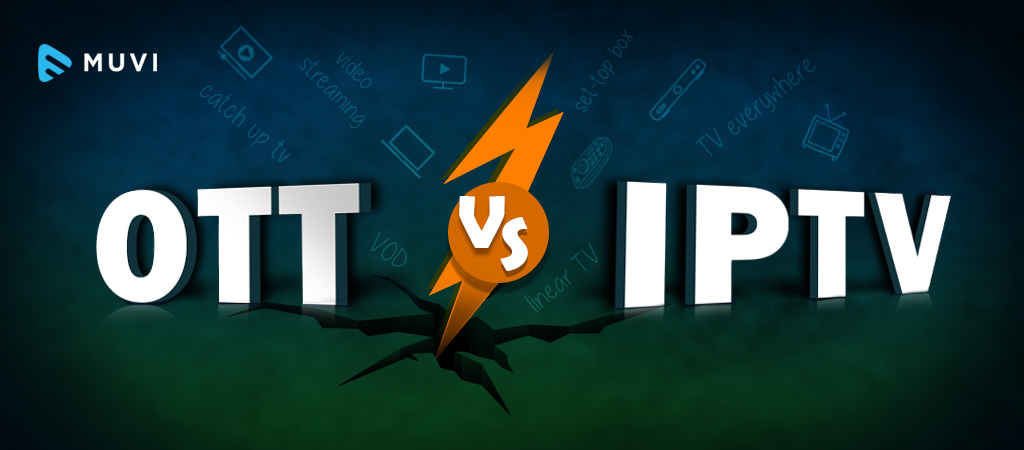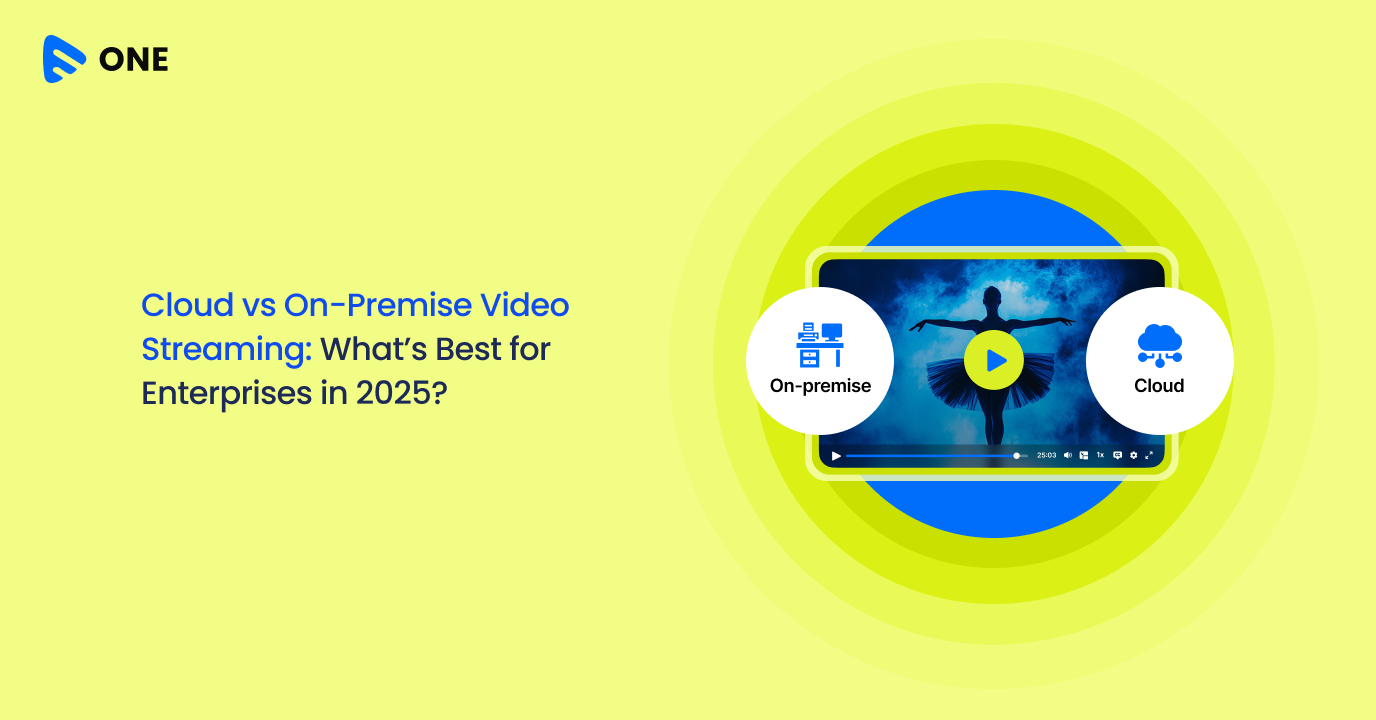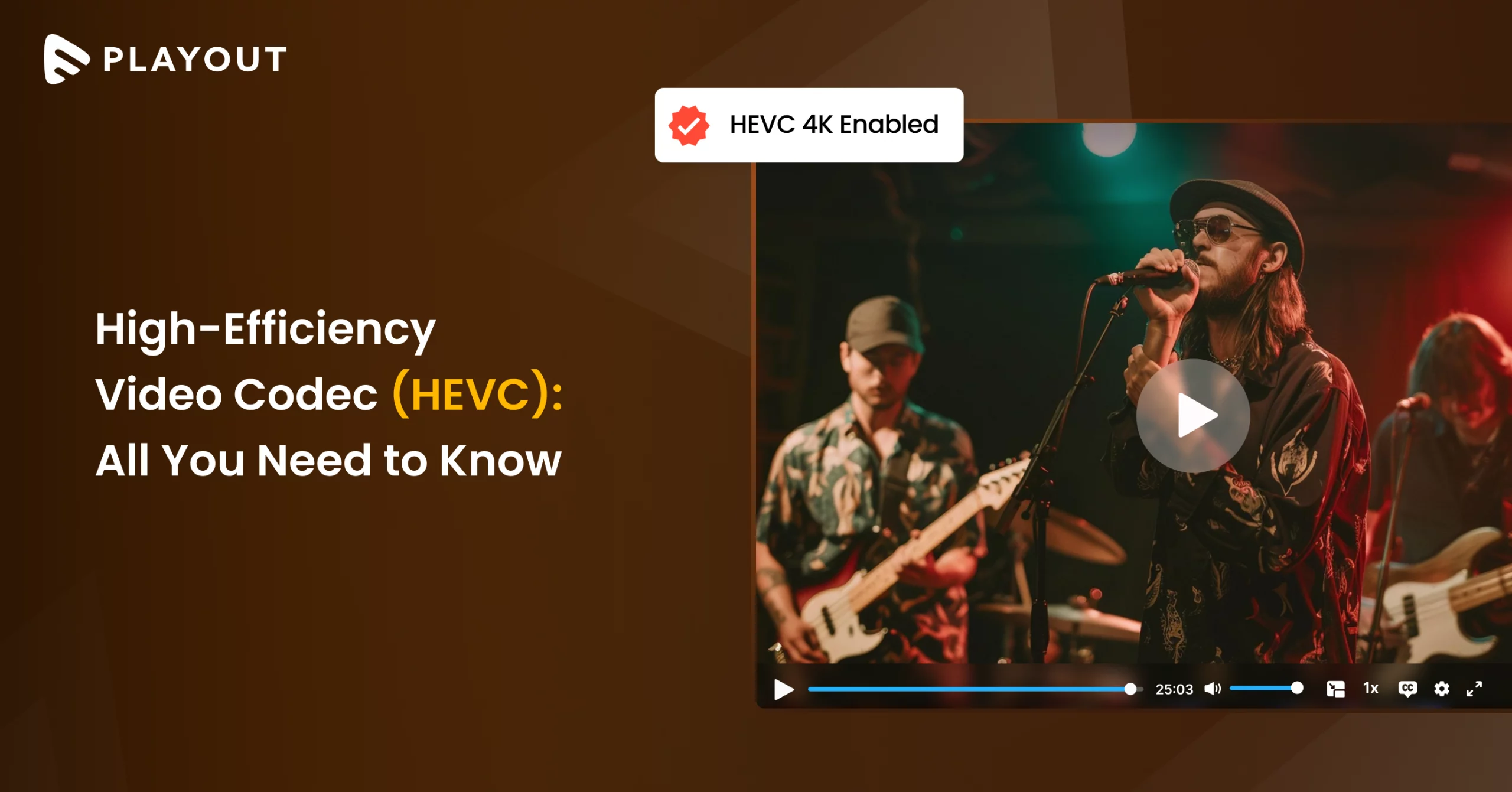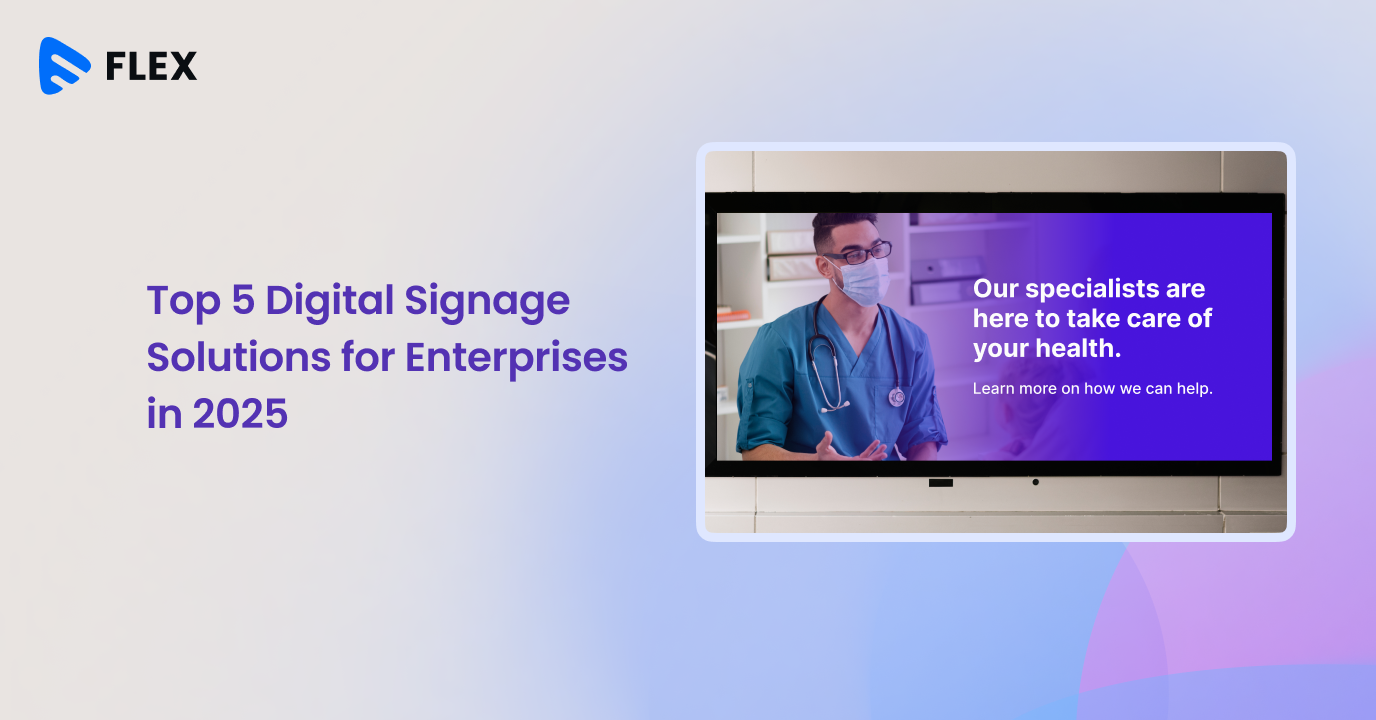We often come across the terms OTT and IPTV when talking about the video streaming industry.
Don’t beat yourself up if these terms seem puzzling. We hear ya and are here to help.
OTT and IPTV, both, refer to delivering content to the end users, however, there is a stark difference in the mechanism used by both for content delivery. With this blog, we have attempted to provide some clarity on how OTT and IPTV are distinct.
We’ve specially crafted this blog if you are a newbie to these terms and want to learn the basics. Also, we guarantee, this blog will make your life easier if you are looking to venture into starting your own OTT/IPTV service.
OTT is one of the trendiest terms in the entertainment segment right now since it is at the epicenter of the merger between the online and television worlds.
What makes it so trendy?
Don’t just lean back and think that it will wash over you, well actually you can, after what you are about to read. Let’s get this straight. To start with, let’s just say that OTT offers the ability to quickly offer a variety of streaming services to customers so they can watch whatever they want, whenever they want, wherever they want (via data networks/Wi-Fi) on whichever device they want (choice of device – tablet, smartphone, desktop, laptop).
Streaming service providers that offer Internet Protocol Television (IPTV) or Over-the-Top (OTT) solutions are preferred by viewers over service providers that do not offer these services.
Let’s get down to what exactly these terms mean and what essentially is the difference between the two.
What is OTT?
OTT refers to “over-the-top”, meaning distribution of video-on-demand (VOD) and film content delivered via the internet without necessitating the need for a subscription to traditional cable or satellite pay-TV service such as Time Warner Cable or AT&T. Some popular OTT services include Netflix, Amazon Prime video and Hulu to name a few. To know more about OTT, check out Muvi’s all-inclusive blog on What is OTT?
When evaluating an OTT (Over-The-Top) streaming platform, it’s important to consider various features and capabilities to ensure that it meets your specific needs and requirements.
No Code Setup:
When looking for an Over-The-Top (OTT) streaming platform, a “No Code Setup” feature can simplify the process of launching and managing your streaming service. However, there are several other key features and factors to consider as well. It’s also important to research and compare different OTT platforms to find the one that best aligns with your streaming service goals and requirements.
Muvi One helps in easy and quick deployment of your streaming service without the need for coding or technical expertise. It gives you the ability to customize the user interface, branding, and layout of your platform to align with your brand identity. Muvi One supports various monetization methods like subscription-based, pay-per-view, ads, or a combination of these. You also get robust security features to protect your content and prevent unauthorized access or piracy.
Geo-blocking:
Geo-blocking allows you to restrict access to your content based on the geographical location of the viewer. It is essential for compliance with licensing agreements and content distribution restrictions.
Built-in CDN (Content Delivery Network):
A built-in CDN helps in efficient content delivery by distributing video files across a network of servers located in various geographic locations. This reduces latency and ensures a smoother streaming experience for users.
Visual Designer
A visual designer tool enables you to customize the user interface and design of your streaming platform. It allows you to create a unique and branded user experience for your audience.
Content Partner Portal
Content partner portal provides a portal or dashboard for content partners to upload, manage, and track their content. It simplifies content submission and collaboration with external content providers.
App Preview Feature:
Muvi One has revolutionized the streaming app development process, empowering you to create, preview, and test your personalized branded streaming applications in a matter of minutes, thanks to our exclusive feature known as “Try Your App.”
With Muvi powered Try Your App feature, you gain access to a complete, fully functional streaming app that seamlessly embodies your branding, complete with all the features you desire. Best of all, you can preview and experiment with it at absolutely no cost! Once you’re satisfied with the results, launching your app is a breeze, requiring just a few simple clicks to subscribe and go live.
Multiple Monetization Methods:
This feature enables you to generate revenue through various methods such as subscription-based models, pay-per-view, ad-supported content, and in-app purchases. Having multiple options can maximize your revenue potential.
DVR-enabled Livestream:
DVR (Digital Video Recorder) functionality for live streams allows viewers to pause, rewind, or fast forward live broadcasts. It enhances the user experience by giving them more control over their viewing.
Online Video Player:
An online video player is the core component of your streaming platform. It should support various formats, offer adaptive streaming for different devices and network conditions, and provide a seamless playback experience.
SSO (Single Sign-On):
SSO integration allows users to log in to your OTT platform using their existing credentials from other services, like Google or Facebook. It simplifies the login process and enhances user convenience.
Security Certifications:
Security certifications such as ISO 27001 or SOC 2 indicate that your streaming platform adheres to industry-standard security practices. It assures users and partners that their data and content are protected.
Built-in Multi-DRM (Digital Rights Management) Security:
Multi-DRM security ensures that your content is protected from unauthorized access, copying, or redistribution. It supports various DRM technologies to secure your content on different devices and platforms.
Marketing:
Muvi has added Email Marketing to its Video and Audio Streaming Platform. This helps owners tell their subscribers about new stuff like videos, music, deals, and news. It’s a simple way for viewers to know what’s happening on the platform.
Your Muvi One website is excellent for SEO and getting to the top of search results. With pre-made information sets, Muvi One makes things fast and easy. You can also create and change your own details for better results.
Social Sharing:
Muvi One makes it simple to add popular social media networks like Facebook, Twitter, LinkedIn, Pinterest, and YouTube to your video and audio streaming website. This helps you connect with your social media followers and increase your video and audio streaming audience.
What is IPTV?
IPTV refers to Internet Protocol Television which is used for delivering video and related services over the internet.
In order to get internet TV, a broadband connection and a router are needed. So videos are sent over the internet for receiving on a PC or other device. Set-top boxes and TVs that include IPTV services will let you access TV channels like Showtime, Fox Network, CBS, HBO etc.
IPTV is a technology for watching television using Internet Protocol over LAN or the Internet, instead of watching TV over cable or satellite. IPTV has an advantage over downloaded media in that it can stream directly from the source, in smaller chunks of data. This effect is known as streaming media.
For more insights on IPTV and to understand its inner workings including its architecture, please visit the muvi blog on What is IPTV? How does IPTV work?
What features should you look for in an IPTV Platform?
Enable On-demand Content and Live Streaming
Elevate your IPTV platform by providing your audience with the flexibility to access both on-demand and live streaming content. Muvi One seamlessly caters to both content types across various devices and platforms, ensuring your viewers can effortlessly stream their preferred content.
Tailor Your IPTV Solution to Perfection
Craft a bespoke IPTV platform with Muvi One’s adaptable templates to enhance your viewers’ experience. You can also personalize the landing pages, embed your logo within the player, integrate compelling calls to action within your videos, and more.
Rapidly Launch Mobile and TV Apps
Experience the agility of launching mobile and TV apps for your IPTV platform within a mere 24 hours, thanks to Muvi One’s support for over 16 platforms, including Android, iOS, Fire TV, Roku, LG TV app, Windows app, Apple TV, Android TV, XBOX, and Playstation.
Streamline Management via the Video CMS
Simplify the management of your IPTV platform by uploading all your on-demand videos to the intuitive CMS. Efficiently categorize and oversee all aspects of your platform, including monetization, analytics, customization, and security, all from a centralized location.
Deliver Seamless Streaming with Built-in CDN
Ensure your audience enjoys buffer-free streaming via Muvi One’s integrated Content Delivery Network (CDN), hosted on Amazon CloudFront. Content is seamlessly delivered from servers close to your viewers’ locations, guaranteeing an uninterrupted viewing experience.
Enhanced Piracy Protection with Multi-DRM
Fortify your on-demand and live streaming content against piracy threats using Muvi One’s multi-DRM solution. Safeguard your content with visible and forensic watermarks while preventing unauthorized screen recording.
Streamline Content Partnerships with the Partner Portal
Simplify the process of onboarding and collaborating with multiple content partners on your streaming platform with Muvi’s Partner Portal. Empower partners to independently add and update content, upload videos and audio, access real-time reports on content views, and track revenue generation.
Diverse Monetization Options
Maximize revenue potential by offering various monetization models on your IPTV platform, all without revenue sharing. Choose from subscription plans for the entire platform, pay-per-view options, and the ability to run advertisements.
Effortlessly Create a Playout Channel
Establish a playout channel effortlessly using Muvi One. Upload your content, set up a channel schedule, and go live with ease. Additionally, you can seamlessly integrate live streaming into your online TV channel.
In-depth Analytics and Reporting
Gain valuable insights into content performance, user device preferences, viewer engagement, and user retention rates with Muvi One’s robust analytics and reporting tools. Leverage this data to optimize your content and enhance your audience’s experience.
Is OTT better than IPTV? What is the difference?
It’s a known fact that OTT and IPTV solution are systems wherein video is delivered via the internet. So what exactly is the difference between the two? Let’s take a closer look!
IPTV is delivered over a service provider’s own infrastructure (hardware/equipment) whereas OTT is delivered via public internet.
Even though both OTT and IPTV use the internet to deliver streaming content, OTT streaming is provided through open unmanaged internet whereas IPTV uses a dedicated, managed network or infrastructure provided by the operator. With services like Netflix, Hulu, YouTube and others, OTT has been gaining increasing popularity in the last few years.
Let’s delve a little deeper into some basic differences between IPTV and OTT:
IPTV | OTT |
Network scalability, end-user applications and infrastructure are the three most important areas of concentration. | Does not require multiple system operators for controlling and distributing content |
Requires 3 major components namely private, IP-based connected TV, a content headend (a master facility for receiving, processing and distributing IPTV signals) and a set-top box. | Content is delivered to any connected device using an unmanaged, public Internet network. No external equipment like set-top box is required. |
Content is delivered via an ISP’s own infrastructure which may resemble existing digital cable TV setups however they are different from digital cable TV in the sense that IPTV signals are transmitted using a different protocol (format) and different network. | It uses no dedicated network, infrastructure is made available provided by an operator. |
IPTV service providers work with TV channels and primarily aim to distribute channel content with options for catch up TV (record, replay), time-shifted TV. IPTV service providers may or may not offer video on demand content. | OTT service providers work with distributors/production houses and primarily aim to acquire and deliver on demand content whilst providing options of live streaming of TV Channels. |
IPTV requires the device to be connected via a broadband cable based connection | OTT can be viewed on any device data or Wi-Fi and does not necessitate broadband based connectivity. |
IPTV services typically provide EPG (Electronic Program Guide) which is an on-screen guide of scheduled broadcast programming television programs. | OTT service providers typically provide a catalog of viewable content for viewers to pick and choose from. |
The internet service providers (ISPs) that actually deliver the content that arrives from OTT providers like Netflix, Hulu or Amazon Prime are doing so simply by delivering IP packets of data and not “video content”. They don’t distinguish between a data packet carrying video clips from a data packet carrying a piece of email. Quality of content and picture for both OTT and IPTV are different. OTT uses public internet for transport, hence the quality of media content varies according to the quality and speed of the internet connection.
So essentially content quality is the difference between OTT and IPTV. Since IPTV-provided content is transmitted through a network managed by a service provider which directly reaches the customer, a higher quality of video is received.
In OTT, quality of content is not controlled like how it is controlled by standardized metrics for IPTV from the IPTV Interoperability Forum (IIF). Since OTT provides media through content aggregators and user-generated content that is unmanaged hence it cannot be guaranteed to be “high quality”.
The business model, service quality, content quality, ownership, cost etc differ for both OTT and IPTV.
Quite simply, the over-the-top (OTT) proponents say it should be all about the viewers and by that they mean that they should be able to access the content they desire and watch it whenever and wherever they want on the device they choose.
Proponents of OTT believe OTT has a wider scope compared to IPTV since streaming video content via IPTV requires a set-top-box which in most cases includes content provided by a specific supplier. Since it is all about the viewers and viewers get to decide the content they desire to access and watch whenever and wherever they want and on the device they choose by a simple installation of the video streaming app so they can literally watch TV everywhere.
IPTV-ers on the other hand question why providers that deliver bandwidth to stream content should be burdened with the cost of upgrading their networks to manage the enormous bandwidth demands of OTT video.
With how OTT has evolved in terms of it being offered for multiscreen viewing, in real-time via social media and literally living up to the term “TV Everywhere”, it is challenging all forms of media like traditional TV/linear TV, satellite TV etc that were introduced prior to it’s inception. So more viewers are considering dropping their IPTV (Internet Protocol Television) subscriptions altogether and switching over to OTT.
So what’s the future like? OTT or IPTV?
Well, the answer lies in the details in terms of how well providers meet their delivery objectives. User experience is what will determine what end users choose ultimately. So the solution is how communications providers, vendors and the industry as a whole choose to approach the challenge of providing a great user experience.
The winners will be providers who work towards leveraging OTT opportunities and deliver superior quality to their IPTV pay subscribers.
Want to launch your OTT streaming service? Look no further!!
 is an end-to-end SaaS (Software as a Service) provider which is a one-of-a-kind all-inclusive video streaming platform that lets you launch White Label Multi-Screen OTT TV Everywhere based Video on Demand (VOD) platform instantly offering Video on Demand (VOD) and Live Streaming content all controlled from a single Video CMS based admin panel.
is an end-to-end SaaS (Software as a Service) provider which is a one-of-a-kind all-inclusive video streaming platform that lets you launch White Label Multi-Screen OTT TV Everywhere based Video on Demand (VOD) platform instantly offering Video on Demand (VOD) and Live Streaming content all controlled from a single Video CMS based admin panel.
Muvi literally takes care of everything from IT and Technical perspective and the content owners do not need to hire any IT teams, Coders & Developers. There is not a single line of code that needs to be written when it comes to Muvi, everything is ready to go, instantly at a click of a button from Day 1 itself.
Muvi does it all for you, servers, storage, monetization, CDN, video player, reports, user management to website and apps, all under one service and one roof. So go ahead and click here to give Muvi a try.
FAQs
Is YouTube an OTT Platform?
Yes, YouTube can be considered an Over-The-Top (OTT) platform. Over-The-Top refers to the delivery of video content over the internet, bypassing traditional cable or satellite television providers. YouTube is a video sharing platform that allows users to upload, view, and share videos over the internet, and it fits the definition of an OTT service because it delivers video content directly to users via the internet, without the need for a cable or satellite TV subscription.
Can You Enjoy OTT Services through an IPTV Service?
Some IPTV service providers offer hybrid solutions that combine traditional TV channels delivered over an IP network with access to OTT content. In such cases, you can access both live TV channels and streaming services like Netflix or YouTube through a single set-top box or application.
Is OTT the same as IPTV?
No, OTT (Over-the-Top) and IPTV (Internet Protocol Television) are not the same; they are two distinct technologies used for delivering television content to viewers. OTT refers to the delivery of video and television content over the internet without the need for traditional cable or satellite TV subscriptions. IPTV, on the other hand, is a technology that delivers television services over an Internet Protocol (IP) network, typically through a dedicated IPTV service provider.
Is IPTV better than OTT?
Whether IPTV (Internet Protocol Television) is better than OTT (Over-The-Top) depends on your specific needs and preferences. Both IPTV and OTT have their advantages and disadvantages, and the choice between them should be based on your individual requirements.
Is Netflix an example for IPTV?
Netflix is not an example of IPTV (Internet Protocol Television) in the traditional sense. Netflix is an example of an OTT (Over-The-Top) streaming service.
DOWNLOAD WHITEPAPER

















Add your comment